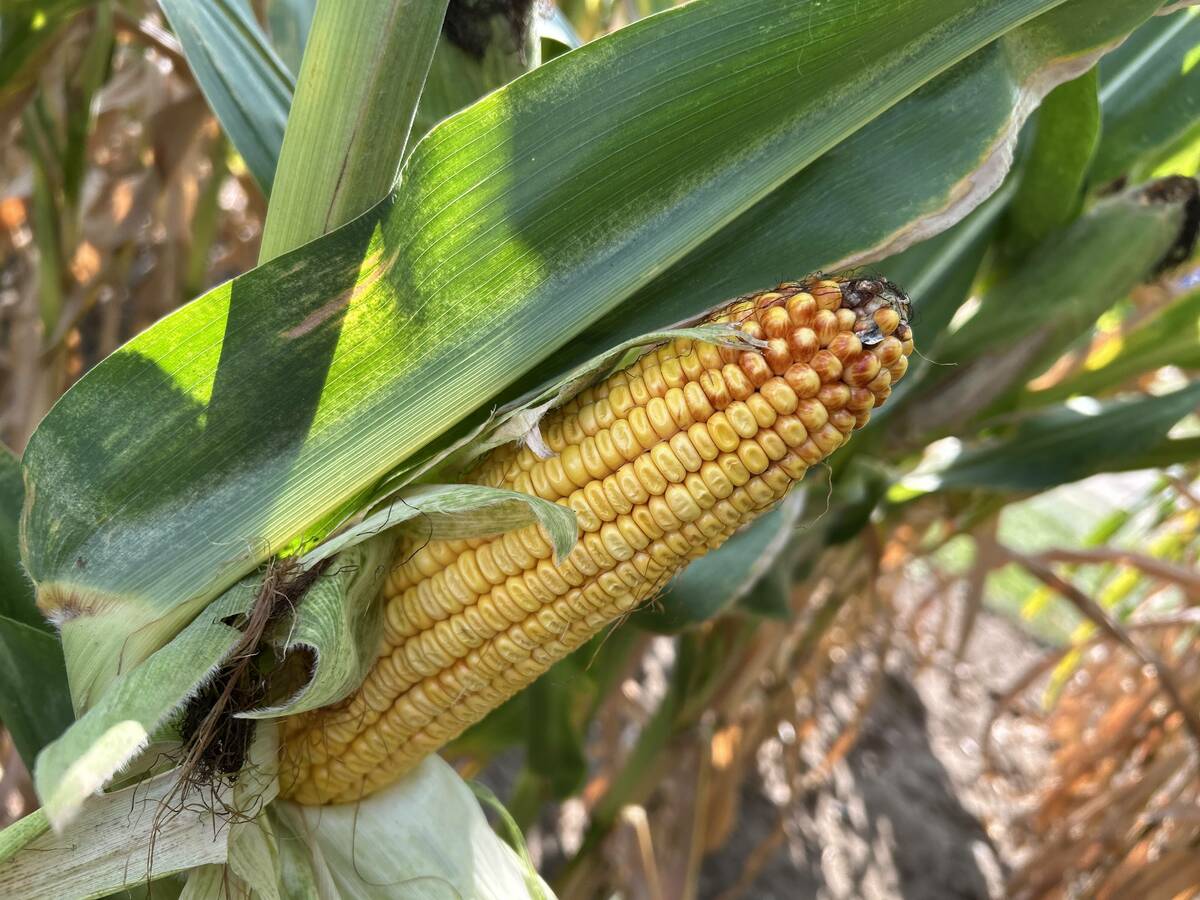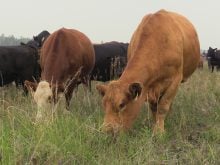This cattle market information is selected from the weekly report from Canfax, a division of the Canadian Cattlemen’s Association. More market information, analysis and statistics are available by becoming a Canfax subscriber by calling 403-275-5110 or at www.canfax.ca.
Fed cattle hold steady
Alberta direct cattle sales saw moderate volume trade last week with prices fully steady with the previous week. A handful of live steer trade was reported comparable with live steer trade two weeks ago. Sales were in a tight $253-$254 per hundredweight price range last week. Average steer and heifer prices closed last week fully steady at $150.92 and $150.22 per cwt., respectively, and have traded steady to stronger for the past three weeks.
Read Also

Crop estimates show mixed results
Model-based estimates used by Statistics Canada showed the 2025/26 crop year has seen increases in canola, corn for grain, oats and lentils production while seeing dips in spring wheat, durum wheat, soybeans and barley in comparison to 2024/25.
However, average prices have been range-bound for the past eight weeks and are struggling to gain seasonal price momentum.
Western Canadian fed slaughter for the week ending Feb. 27 was 12 percent larger than the previous week at 42,041 head and year to date was 18 percent larger than a year ago at 324,156. Western Canadian steer carcass weights swelled 15 pounds larger than the previous week and were nine lb. larger than the same week last year at 897 lb.
Canadian fed cattle/cow exports to the U.S. for the week ending Feb. 20 were one percent lower than the previous week at 10,472 head. Year-to-date exports for the same week were down nine percent, totalling 70,718 head.
Ontario saw active cash trade last week at prices fully steady with the previous week. The majority of sales were reported at $242 per cwt. delivered and were scheduled for the second half of March slaughter. Tru Harvest, in the former Ryder-Regency plant, started a reduced kill last week and competed for fed cattle.
There will be 26,376 head of set-aside cattle eligible for slaughter on March 12, and additional program cattle will be released March 19 and March 23. The impact should be negligible because they won’t all be offered or marketed at the same time.
Packer inventories are being pushed toward April but feedlot supplies continue to be pulled forward and are generally current.
In the U.S., light live trade was reported steady with the previous week in the south at US$114 per cwt. and steady to $1 per cwt. lower than the previous week at $113-$114 per cwt. in the north. Dressed sales were mostly reported at $180 per cwt. delivered, steady to $1 per cwt. lower than the previous week’s Nebraska rail average.
Large slaughter levels are expected to continue on strong supportive export demand, increased COVID reopening and improved spring buying. Steer carcass weights for the week ending Feb. 20 were significantly 10 lb. lighter than the previous week at 909 lb. and were a modest four lb. larger than the same week last year.
Butcher cows steady
After rallying $10 per cwt. over the previous two weeks, butcher cow prices levelled off last week, trading steady to 75 cents per cwt. lower. D2 cows averaged $86.10 and D3s averaged $76.30 per cwt. Larger non-fed numbers are not showing up at commercial auctions, suggesting cow-calf producers are current in marketing.
For the month of February, western Canadian cow slaughter was down 26 percent compared to last year. Based on the five-year average, from the start of March to the start of April, cow prices on average increase $3 per cwt. and bull prices strengthen $7.25 per cwt.
So far this year slaughter bull exports to the U.S. are averaging 487 head weekly compared to 603 head per week last year. With fewer bulls exported, more are being slaughtered in Canada. Year to date, bull slaughter is up five percent compared to last year. Canadian butcher bull exports account for 52 percent of total bull marketings.
In overseas markets, Australian cattle slaughter is down year over year and herd rebuilding looks to be occurring. According to Meat and Livestock Australia, total Australian beef exports for January were down 37 percent compared to last year. Reduced Australian exports should support the North American trim market.
Auctions get busy
In the previous two weeks, total auction volumes in British Columbia, Alberta, Saskatchewan and Manitoba are 78,000 head larger than last year. Last week, Alberta auction volumes alone totalled slightly more than 50,000 head. The last time this happened during March was in 2010. For the start of March, 850 lb. steer prices are trading $3 per cwt. higher than last year and $2 per cwt. higher than the five-year average.
Heavier weight feeder prices usually bottom in late March or early April before trending higher into summer. This has not been the case this year as heavier weight feeder cattle prices continue to trade near annual price highs.
Grass buyers seem active on cattle that weigh 600-750 lb. Alberta and Saskatchewan calf prices are trading at a premium to Manitoba and Ontario. Auction volumes have likely peaked for spring. Price upside remains limited on heavier weight feeders.
In terms of bred cattle, two herd dispersals were highlighted last week and demand from the cow-calf sector continues strong with top-end cows reaching $2,725 per head. Last week bred cows averaged $1,900 per head.
Cows that are expected to calve in the next 30 to 45 days are trading at a premium to cows scheduled to calve from May to July.
U.S. cutouts lower
In U.S. beef trade, wholesale price resistance pushed cut-out values seasonally lower. Choice was down US$6.51 per cwt. to average $233.88, and Select was down $7.11 per cwt. to average $221.68 per cwt. Middle meats saw the largest price declines.
Total U.S. slaughter last week was estimated to be steady with the previous week and around two percent larger than year ago at 665,000 head. Total weekly beef load counts tightened on increased buyer price resistance, down five percent from the previous week to 502 loads.














